Sell sheets
Distribute — 2016
Distribute was tacking a huge problem: the antiquated world of wholesale. We were trying to streamline the process by taking the whole process online — from inventory through to purchase orders. When I joined, we had an online marketplace for our buyers and suppliers. While getting supplier inventory online for buyers to view was the first step to solving this whale of a problem, it hardly scratched the surface.
Dissecting the process
Having only inventory online meant that our sales team was still manually facilitating orders between our buyers and sellers. Because of this, sales was a goldmine of information into how the process worked, as well as the common requests and complaints from both sides of the coin. In addition to interviewing the buyers and suppliers, we focused most of our time interviewing and shadowing our sales team to learn more about the wholesale process.
What did we find?
While mapping out the higher-level process was relatively simple (think: buyer chooses what and how much, requests it from buyer, payment is confirmed, order is placed, order is shipped), it was riddled with inconsistency and nuance. Some key factors we uncovered were:
Suppliers are king
Suppliers were the ones calling the shots on both who was allowed to buy from them and what pricing those buyers would receive.
Suppliers facilitate orders via sell sheets
When inventory was ready for orders, suppliers would fax out sell sheets of their inventory to their approved buyers . Though each supplier’s sell sheets were slightly different, they generally were very long, word-heavy forms of catalogs.
Pricing isn’t always set in stone
Tiered pricing, bulk pricing, minimum order amount, etc. It was never the same for every buyer.
There is a LOT of back and forth before orders are confirmed
Checking if inventory is in stock, questions around discounts, questions around item colors and versions…etc
Confirmation has to happen for both the buyers and suppliers before an order is placed.
Shipping wasn’t always handled by the supplier
Many buyers had their own shipping services they insisted on using, depending on the warehouse and delivery locations.
Where do we start?
We realized that we needed to mimic the pre-purchase order process before we could tackle putting purchase orders online. From here, we started to ideate on how to move the concept of sell sheets online while streamlining the process for both the buyers and suppliers.
Ideation & Prototypes
There were a lot of things we considered during the ideation stage of sell sheets: how do we use this to give the buyer more power? Which areas of confusion can we cut down by bringing it online? How do we keep pricing consistent and transparent? How do we protect suppliers from unapproved buyers?
Idea 1: Online catalogs
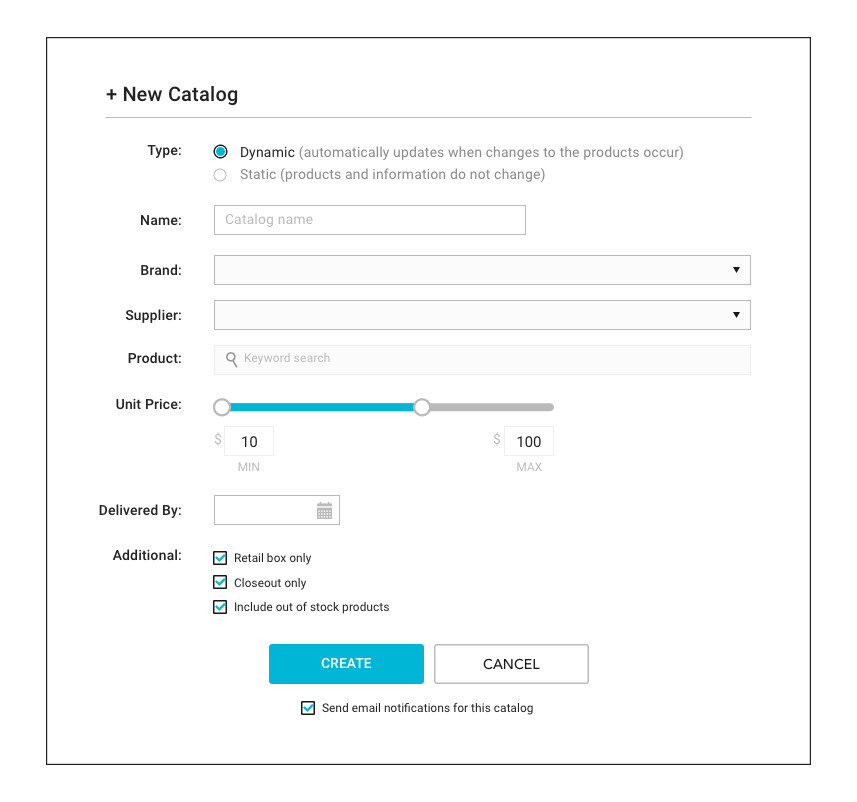
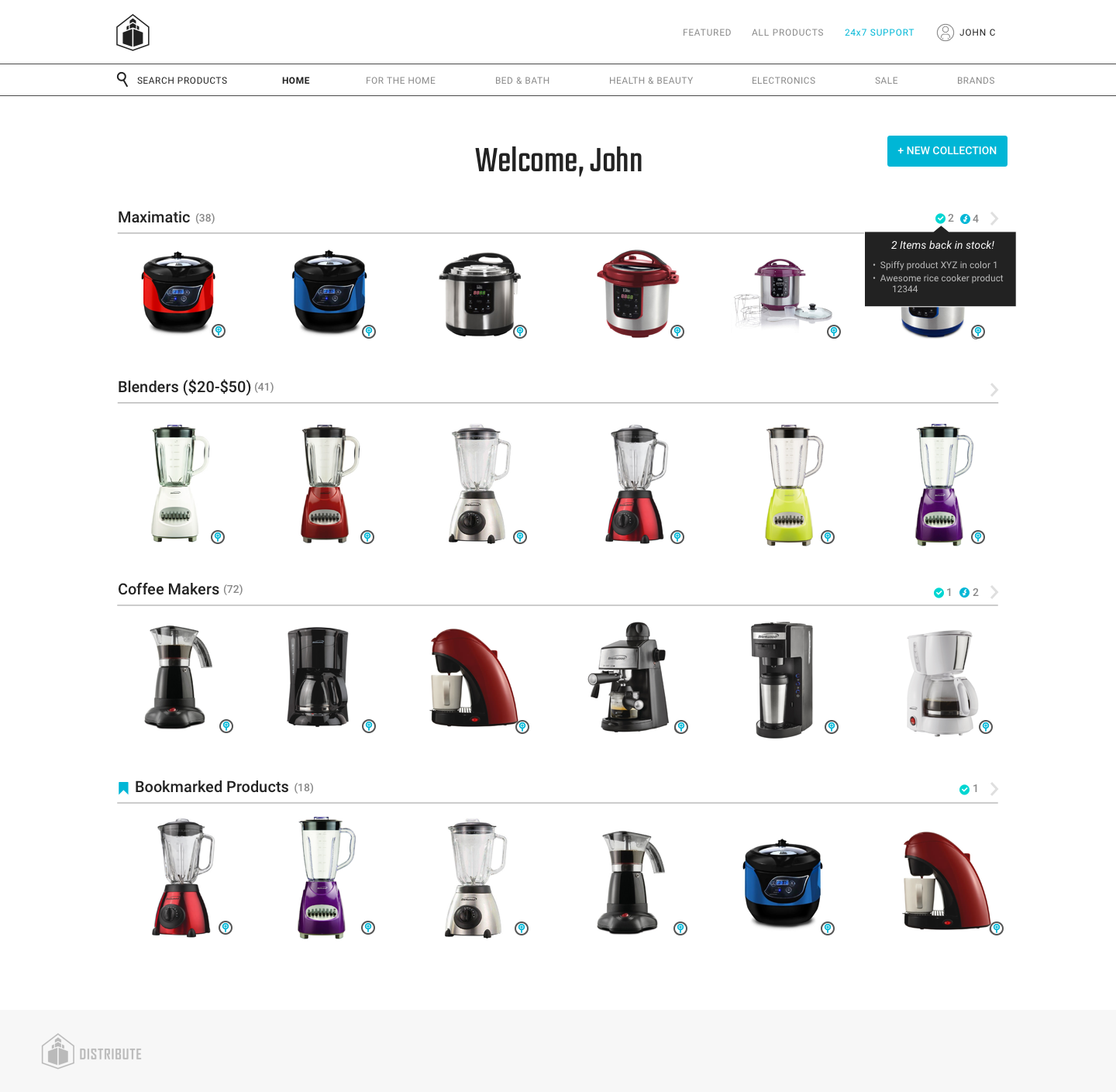
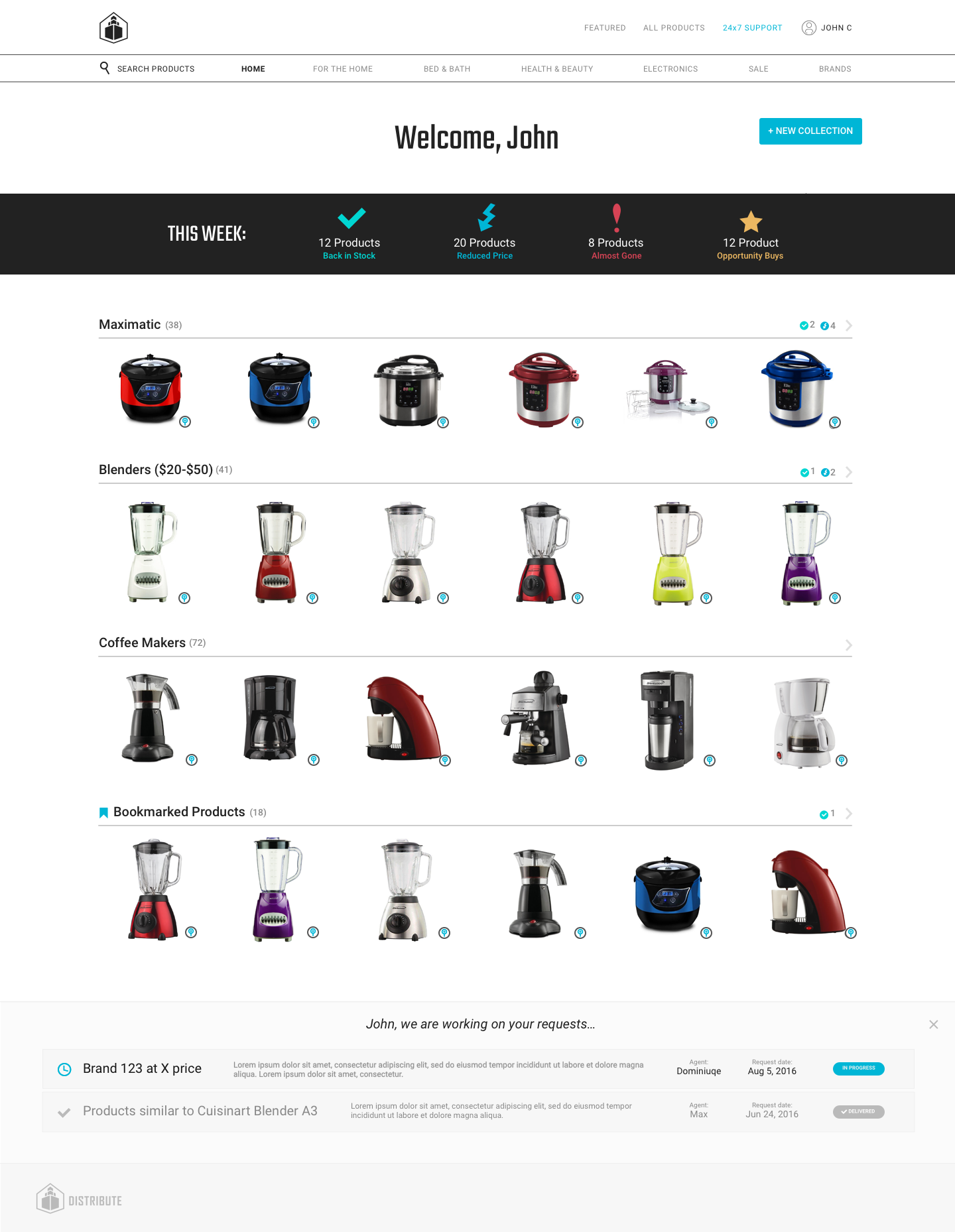
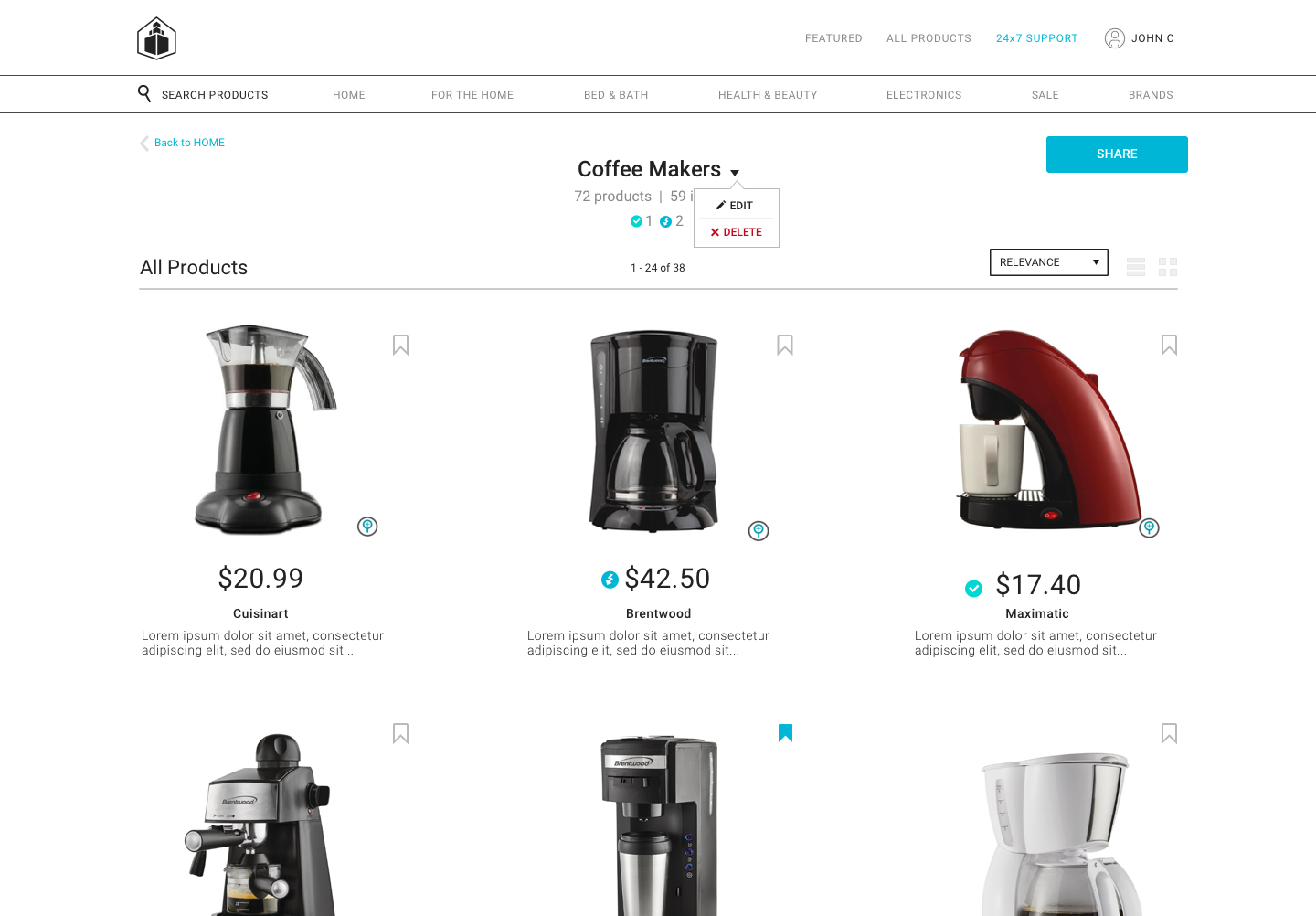
Cons:
The online shopping model made it hard to make quick ordering decisions
Suppliers didn’t like feeling as though they were “competing” with other suppliers
This would require the ability to create multiple carts, which was a ton of upfront work
Pros:
Allowed for more detailed product information and images with products
Familiar online shopping aesthetic and checkout
Gave buyers more control through ability to create their own catalogs (saved searches) that let them compare all their options
Gave more visibility into inventory details, such as: out of stock, back in stock, and price drops
Public catalogs allow suppliers to easily reach a large range of buyers
In the end, we decided that this option wasn’t the best move for what we were trying to solve. Suppliers needed to keep their relationships with their buyers private and under their control. Though drawing on traditional online shopping conventions was familiar and easy, we decided to more closely mimic the current wholesale process online.
Idea 2: Online sell sheets

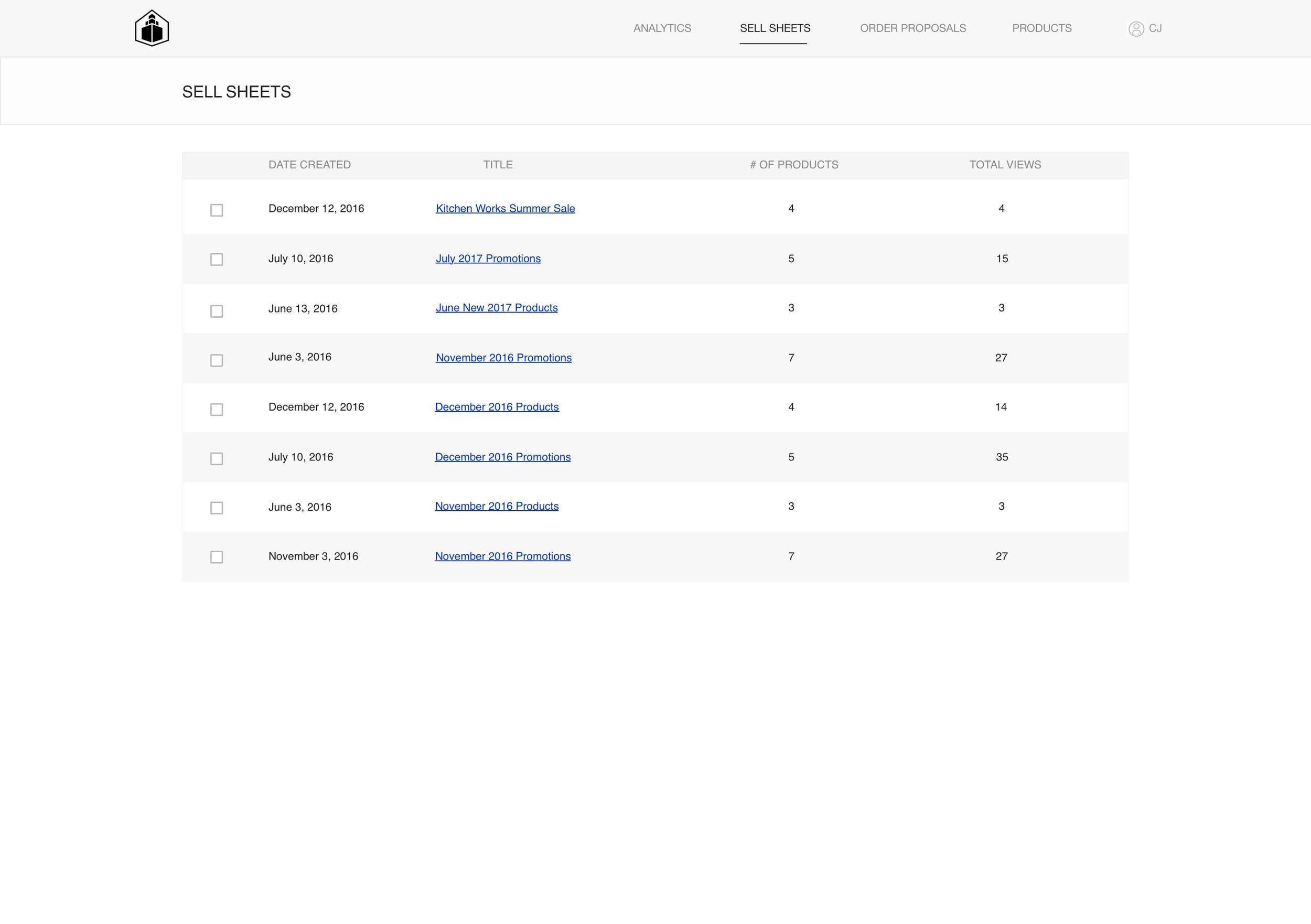




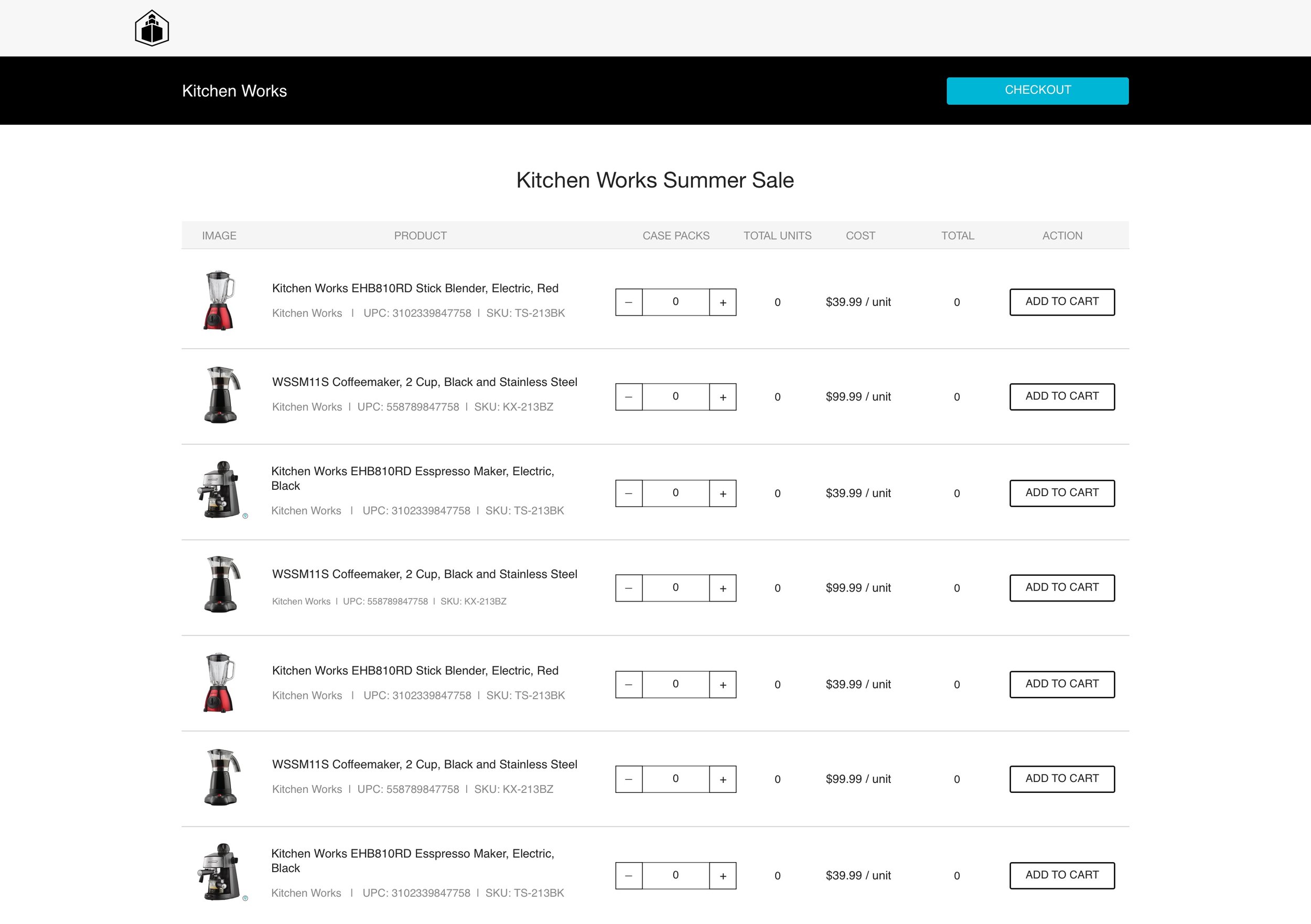
Cons:
Keeps the power in the supplier’s hands
Harder to understand price fluctuations and inventory changes
Requires extra effort for suppliers to share with buyers
Still have to use email to send sell sheet links to buyers
Pros:
Allows suppliers to easily create sell sheets from inventory already uploaded to our platform
Suppliers still can control which buyers are allowed to see each sell sheet
Suppliers can easily update pricing on sell sheet inventory in one place
Ability to name sell sheets helps keep things organized and easy to find
Allows approved buyers to checkout directly from a supplier sell sheet
Sell sheets V1
Speaking with the rest of the team, this is the design path we decided to take. It used the structure we already had, and set us up to easily add in online purchase orders and perfect our wholesale checkout. Additionally, it allowed us to take a baby-step forward in making the wholesale process more efficient and streamlined, without trying to convince our buyers and suppliers to completely change their processes.
We knew up front that there would be a few limitations with the V1 of sell sheets, primarily:
V1 would only allow sell sheets to be made directly from “Products”
V1 wouldn’t allow the addition of more items to an already existing sell sheet; this would have to happen from the sell sheet
We decided that, because this didn’t prevent any needed functionality, the flexibility we knew we wanted could be added in as a feature update later down the line.
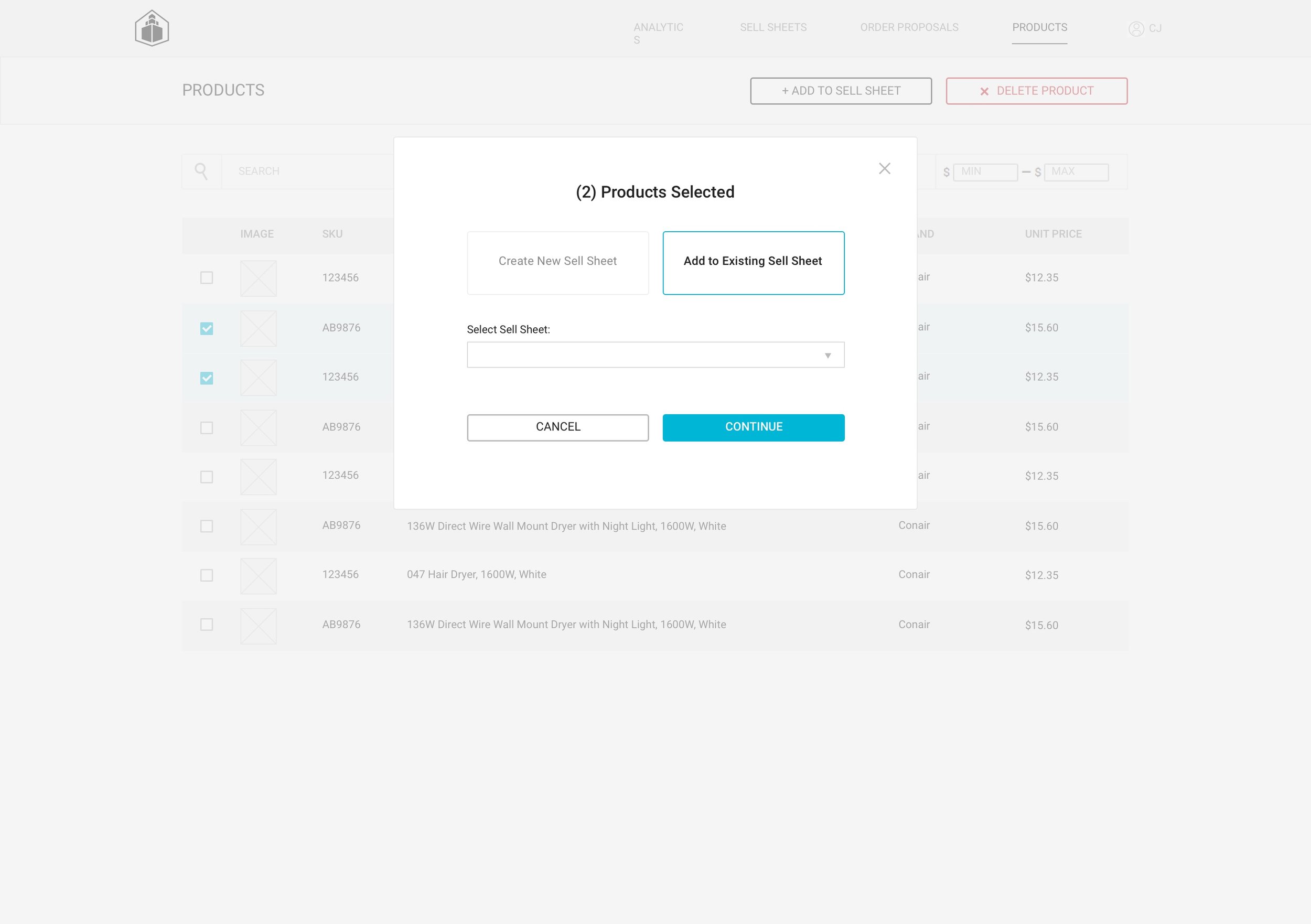
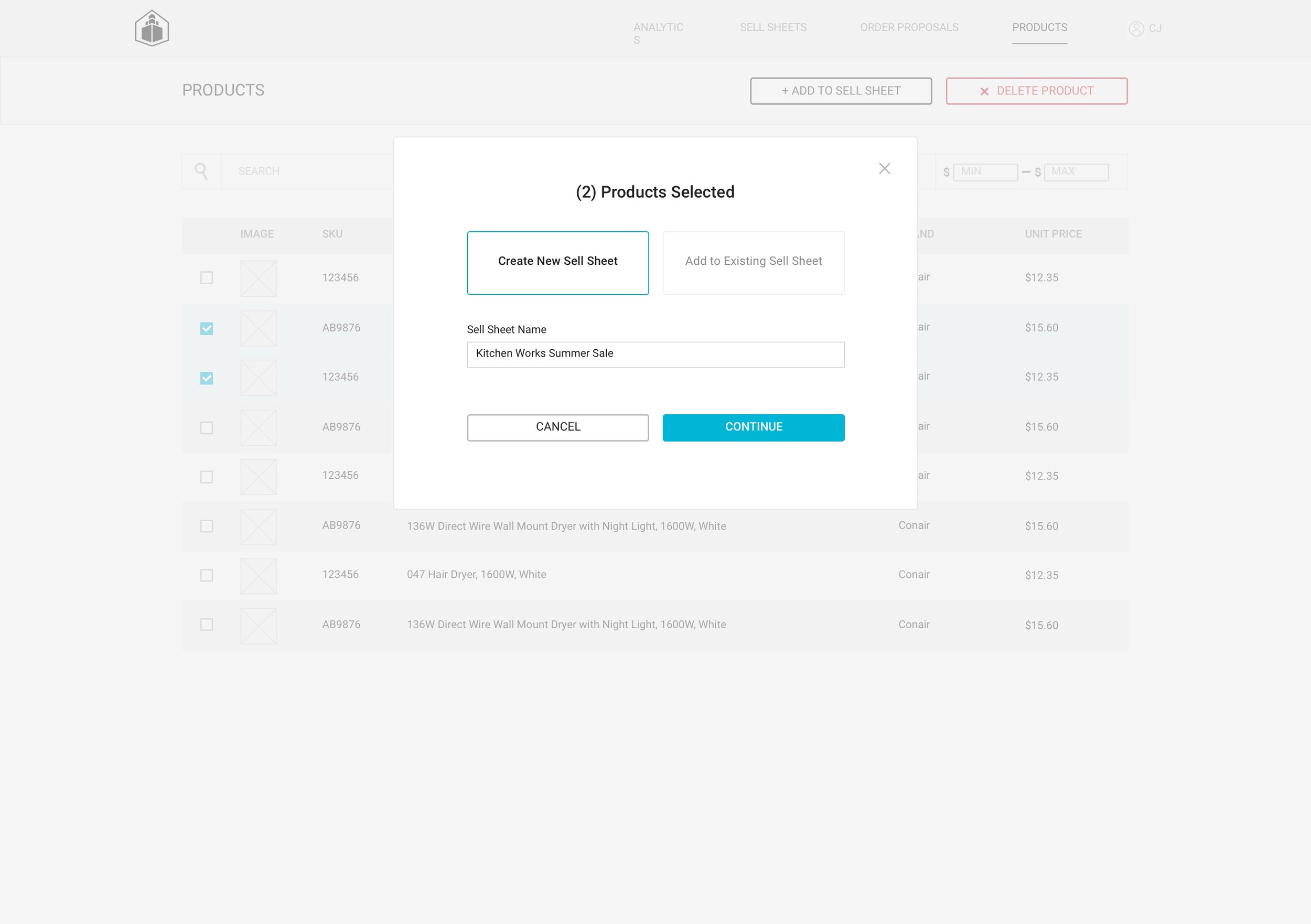
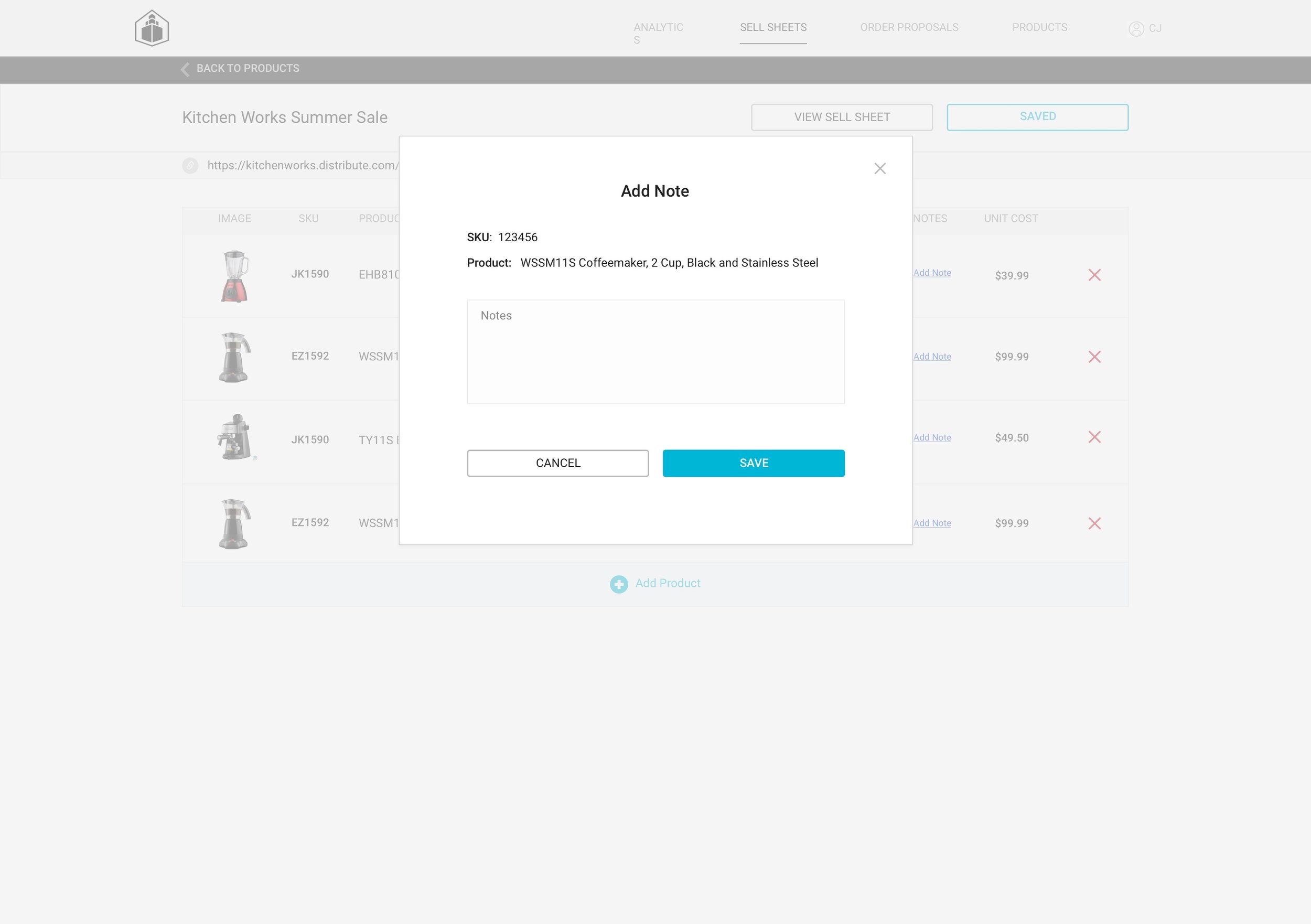

What we missed
After presenting our preliminary designs to our suppliers and buyers, we received great feedback. However, in these discussions we uncovered a few more things that were needed to completely solve the process — the MVP additions being:
Ability to add notes to specific items
Addition of units available to sell sheets for easy scanning
Hidden pricing for unapproved buyers (in case a link was shared with a buyer who wasn’t authorized to see that pricing)
Addition of the supplier point of contact, in case the buyer has questions
Without these additions, there would still need to be a fair bit of back and forth via email between buyers and sellers. This meant they would be using two tools (Distribute and email), making our value prop virtually moot. We got to work immediately to ideate and test the best way to integrate these needs.
The other key aspects we missed were more “nice to haves” that would could wait until V2 of sell sheets. These included:
Allowing suppliers to set pricing tiers for buyers so suppliers can share with all buyers rather than creating per-tier sell sheets
Ability to add a blanket discount on all sell sheet items so suppliers don’t have to manually change each one
Ability to share with buyers within the platform
Clear indication of out of stock items



